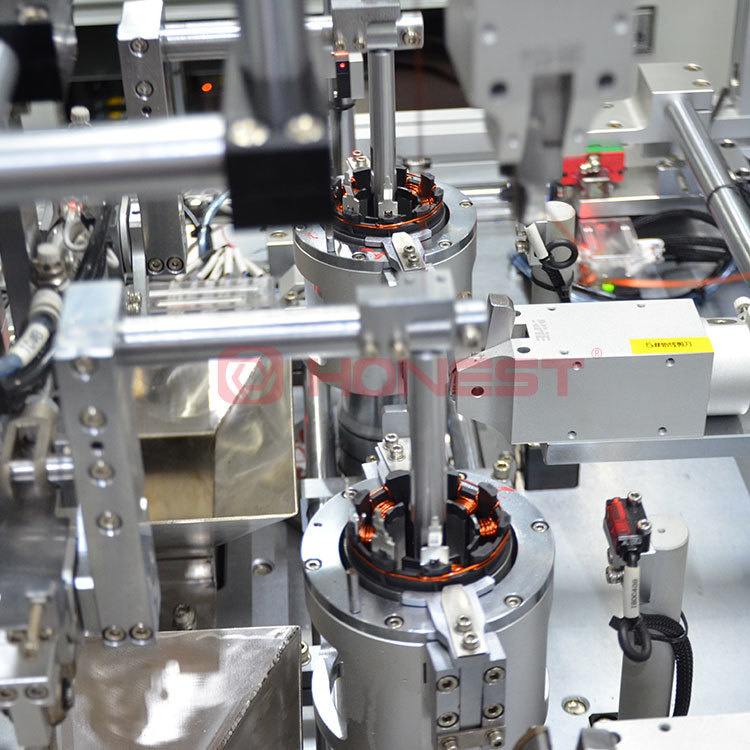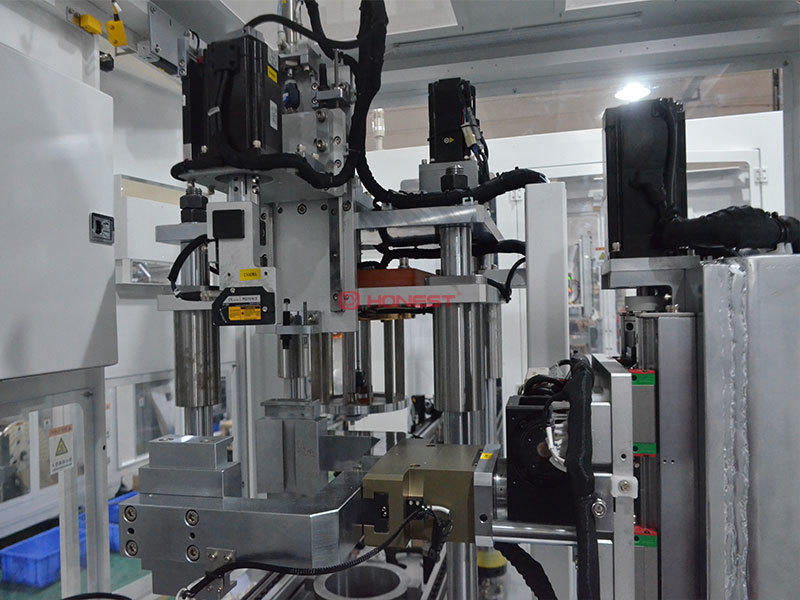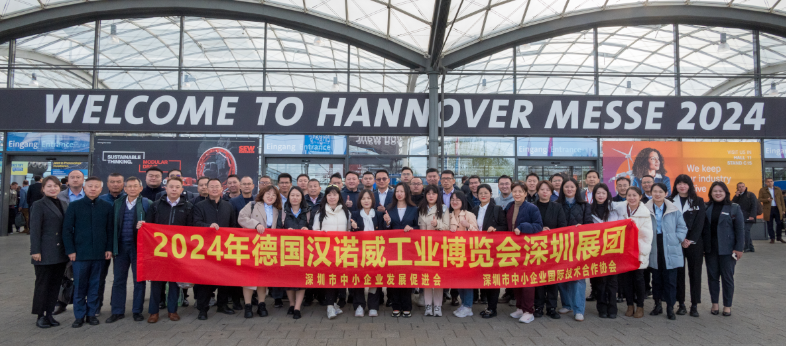
News Center
Vacuum Pump Motor Characteristics and Classification
Published on.
2024-05-08 14:54
Source
A vacuum pump motor is a motor especially used to drive vacuum pumps. A vacuum pump is an industrial device used to extract gas from an enclosed space to create a partial vacuum. The state is significant in a variety of industrial applications, including semiconductor manufacturing, pharmaceutical packaging, food processing, laboratory testing, and so on.
Advantages of vacuum pump motor
High Efficiency: Vacuum pump motors, especially permanent magnet synchronous motors (PMSM), are favored for their high efficiency, helping to reduce energy consumption and operating costs.
High Reliability: Since there is no mechanical commutator, the motor requires less maintenance, increasing overall reliability.
Compact Design: Vacuum pump motors are usually designed to be very compact, saving space and easy to integrate into various systems.
Oil-free Operation: Some vacuum pump motors can achieve oil-free operation, avoiding oil pollution, and are suitable for applications that require a clean vacuum environment.
Wide Speed Regulation Range: Some vacuum pump motors, such as permanent magnet-assisted synchronous reluctance motors, can achieve a wide range of step-less speed regulation, increasing application flexibility.
Good Heat Dissipation Performance: Through a carefully designed cooling system, such as an axial reentrant cooling water channel, the temperature of the motor can be effectively controlled to improve performance and life.
High-performance Materials: The use of high-performance permanent magnet materials, such as rare earth permanent magnets, can improve the force index and power density of the motor.
Low-noise Operation: Due to the high efficiency and brushless design of permanent magnet motors, vacuum pump motors typically operate with low noise.
Disadvantages of vacuum pump motor
Cost: Especially the cost of permanent magnet motors using rare earth permanent magnet materials is relatively high.
High-Temperature Sensitivity: Permanent magnets are sensitive to temperature, and irreversible demagnetization may occur at high temperatures, which limits their use in some high-temperature applications.
Rotor Heat Dissipation Challenge: In the integrated design of the pump, the heat generated by the rotor is difficult to dissipate, which may lead to performance degradation.
Specific Application Limitations: Vacuum pump motors are not suitable for pumping explosive gases or gases with excessive oxygen content.
Control System Complexity: Certain types of vacuum pump motors, such as switched reluctance motors(SRM), may require specialized controllers, adding to system complexity and cost.
Repairs and Maintenance: Although maintenance requirements are low, when repairs are required, complex procedures may be involved, especially for permanent magnet motors.
Efficiency Reduction: Under high-speed operation or light load conditions, especially for permanent magnet motors, efficiency may be reduced.

Classifications of vacuum pump motor
Vacuum pump motors can be classified according to different standards, such as performance characteristics, working principles, structural features, and so on. The details are as follows:
1.Classification according to performance characteristics and uses
Low Vacuum Pump Motor: It is suitable for vacuum pumps with ultimate pressure higher than 102Pa, such as reciprocating, rotary, liquid ring, and jet vacuum pumps. The type of motor usually has a simple structure and low price, but its rotation speed is greatly affected by the power frequency.
Medium Vacuum Pump Motor: It is suitable for vacuum pumps with an ultimate pressure of 102--10-1Pa medium vacuum pumps, multi-stage jet vacuum pumps, multi-stage rotary mechanical vacuum pumps, and high-speed rotary mechanical vacuum pumps.
High Vacuum Pump Motor: Vacuum pumps with an ultimate pressure of 10-1--10-5Pa are high vacuum pumps. Common high vacuum pumps include various diffusion pumps and molecular pumps.
Ultra-high Vacuum Pump: Vacuum pumps with ultimate pressure lower than 10-5Pa are ultra-high vacuum pumps. It mainly includes various ion pumps, cryogenic pumps, and so on.
2.Classification according to working principle and structural characteristics
Mechanical Volumetric Vacuum Pump Motor: It relies on mechanical movement to periodically change the working volume of the pump chamber to achieve air pumping, such as reciprocating and rotary mechanical pumps. They usually have a simple structure, reliable operation, long life, and easy maintenance.
Jet Vacuum Pump Motor: There are no mechanical moving parts, and it mainly relies on high-speed jets passing through the nozzle to evacuate, such as steam jet pumps, diffusion pumps, etc. It has a simple structure, easy operation, less maintenance, and no running parts.
3. Classified by Motor Type
DC Motor: It has stable speed and good speed regulation, but a complex structure and high cost.
AC Motor: It uses an AC power supply and has a simple structure and low price, but the rotation speed is greatly affected by the frequency of the power supply.
Brushless Motor: It has low noise, long life, and high efficiency, but the cost is also higher.
When choosing a vacuum pump motor, some factors need to be noticed:
1. Power: Choose the appropriate power according to the working needs and load requirements of the vacuum pump.
2. Speed: The speed of the motor has an important impact on the efficiency of the vacuum pump as well as the airflow and pressure.
3. Voltage and Frequency: Select the appropriate voltage and frequency according to the local power grid standard.
4. Protection Level: Choose the appropriate protection level according to the working environment of the vacuum pump.
5. Brand and Quality: Choose a motor from a well-known brand and pay attention to its quality and reliability.
6. Cost and Budget: Choose the right motor based on budget constraints, balancing performance with price.
Different types of vacuum pump motors have their unique advantages and limitations. When selecting, you need to determine the most suitable motor type based on specific application requirements and working environment.
The application of vacuum pump motor in the automotive field
1. Brake Assist System: In new energy vehicles, since there is no traditional internal combustion engine to provide a vacuum source, an electric vacuum pump is needed to achieve brake assist. The electric vacuum pump generates a vacuum source to assist braking, which is a key component in the braking system of new energy vehicles.
2. Battery Production: During the manufacturing process of lithium-ion batteries for electric vehicles, many key processes need to be performed under vacuum to ensure battery quality and performance.
3. Automotive Electric Vacuum Pump(EVP): It is specially designed for automotive brake assist vacuum pumps to provide power for the vacuum pump, establish negative pressure, and ultimately achieve the braking function. They have the characteristics of good performance, long life, high EMC level, and low cost.
4. Vacuum-assisted Braking System: Electric vacuum pumps play a vital role in vacuum-assisted braking systems. They are driven by DC motors to create a safe space for fluid flow and are indispensable key components in electric vehicles.
5. Market Prospects: With the popularity of new energy vehicles, the application prospects of automotive electronic vacuum pumps are promising. They are increasingly used in the automotive field and are considered to be a better choice than mechanical vacuum pumps.
6. Control Strategy: In electric vehicles, the control strategy of the vacuum pump is also very important. For example, the starting and stopping of a vacuum pump can be controlled by a relative vacuum threshold, taking into account the influence of external atmospheric pressure and the size of the booster cylinder.
7. Product Parameters: The product parameters of motors used in automotive electronic vacuum pumps (EVP), such as casing diameter, height, EMC level, weight, and operating voltage, are all customized according to the specific needs of the automotive industry.
In all, vacuum pump motors play an important role in the automotive field, especially in the braking systems of new energy vehicles, and with the development of technology, their application scope and market prospects will continue to expand.
Something about vacuum pump maintenance
1. Check whether the vacuum pump, pipelines, and joints are loose. Turn it by hand to see if it is flexible.
2. Add bearing lubricating oil into the bearing body. Observe that the oil level should be at the center line of the oil mark. The lubricating oil should be replaced or replenished in time.
3. Close the gate valve, outlet pressure gauge, and inlet vacuum gauge of the outlet pipeline.
4. Jog the motor to see if the motor direction is correct.
5. Start the motor, when the vacuum pump operates normally, open the outlet pressure gauge and the inlet vacuum pump. After they show appropriate pressure, gradually open the gate valve and check the motor load at the same time.
6. Try to control the flow and lift of the vacuum pump within the range indicated on the sign to ensure that the vacuum pump operates at the highest efficiency point to achieve the greatest energy-saving effect.
7. During the operation of the vacuum pump, the bearing temperature must not exceed the ambient temperature of 35C, and the maximum temperature must not exceed 80C.
8. When the vacuum pump is to be stopped, first close the gate valve and pressure gauge, and then stop the motor.
9. If the vacuum pump is to be out of service for a long time, it is necessary to disassemble the vacuum pump completely, wipe it dry, apply grease to the rotating parts and joints, install them, and store them properly.
About HONEST

HONEST’s non-standard customized automotive vacuum pump motor automatic production line is composed of 19 pieces of equipment, including data traceability, visual inspection, depth inspection, upward material identification, mixing identification, and other methods to prevent mistakes. If you have any needs for customizing semi-automatic or automatic production lines or equipment for vacuum pump motors, please feel free to contact us. We can provide you with some product brochures and videos
Related News




